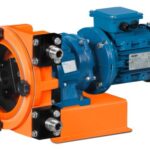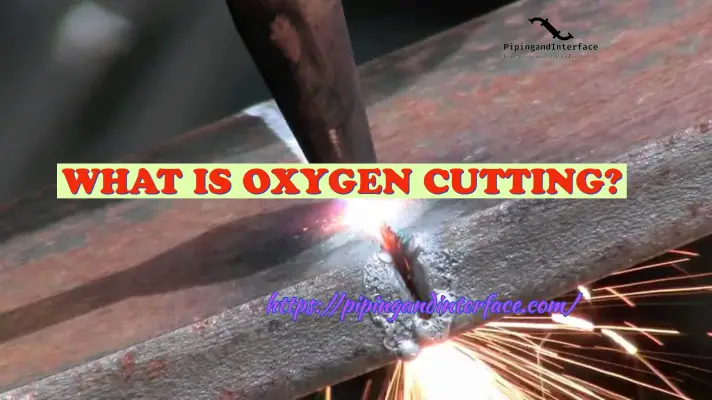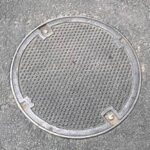When it comes to construction, fabrication, and engineering projects, the choice of materials plays a pivotal role in determining the outcome. Square tubing, also known as square tube, is one such versatile material that finds applications across a wide range of industries. In this comprehensive guide, we’ll delve into the world of square tubing, exploring its characteristics, uses, materials, advantages, and specifications.
What Is a Square Tube?
Square tubing is a hollow, square-shaped metal tube with uniform sides and a defined cross-sectional shape. This uniformity in shape sets it apart from other types of tubing, such as round or rectangular tubing. Square tubes are typically made from materials like steel, aluminum, stainless steel, or even plastics. The manufacturing process involves forming a flat strip of the chosen material into a square shape and welding the edges together to create a seamless, rigid structure.
The name itself provides the definition of a square tube as the metallic tube that has been formed into a square tube. They are measured by outside dimensions and then the wall thickness. The thickness of square tubes is mentioned as gauges. With an increase in the tube gauge number, the square tube thickness reduces. Square tubes are also known as hollow sections. Fig. 1 shows typical square tubes.

Characteristics of Square Tubes
Square tubes or square tubing, possess several distinct characteristics that make them a popular choice in various applications. Here are the key characteristics of square tubes:
- Square Cross-Section: The uniform, square-shaped cross-section sets square tubes apart from other types of tubing, such as round or rectangular tubes, and provides specific advantages.
- Uniform Sides: Square tubes have four equal-length sides and 90-degree angles between adjacent sides. This uniformity in shape simplifies design and construction processes.
- Variety of Sizes: Square tubes come in a wide range of sizes, typically measured by their outer dimensions. Common sizes range from small, such as 1/2 inch by 1/2 inch, to larger sizes like 24 inches by 24 inches, providing flexibility in design and use.
- Strength and Load-Bearing Capacity: Square tubes are known for their high strength-to-weight ratio. The square shape distributes loads evenly across all sides, making them suitable for bearing heavy loads and resisting torsional forces. This property is valuable in structural and load-bearing applications.
- Stiffness: Square tubes offer excellent stiffness and rigidity, which is important for maintaining the structural integrity of a design. This stiffness helps prevent sagging or deformation under heavy loads.
- Ease of Fabrication: Square tubes are relatively easy to cut, weld, and machine, making them versatile and adaptable for various projects. This ease of fabrication simplifies the manufacturing process.
- Durability: Depending on the material used, square tubes can exhibit high durability and resistance to wear and tear. For example, stainless steel or aluminum square tubes are often chosen for their corrosion resistance, making them suitable for outdoor and marine applications.
- Versatility: Square tubes find applications in a wide range of industries, including construction, manufacturing, transportation, furniture design, architectural detailing, and DIY projects. Their versatility makes them a valuable choice for different purposes.
- Aesthetic Appeal: The clean lines and modern appearance of square tubes make them popular in architectural and design contexts. They can add a sleek and contemporary look to structures and products.
- Customization: Square tubes can be easily customized to meet specific project requirements. This includes variations in size, thickness, material, and finishes.
Applications of Square Tube
The versatility of square tubing is evident in its extensive range of applications:
- Construction: Square tubing is commonly used in construction for creating frameworks, support columns, and trusses. Its high strength-to-weight ratio makes it a preferred choice for building projects. They are found in fencing, railing, entry gates, decorative dividers, and many other applications.
- Manufacturing: Square tubing is essential in manufacturing processes for conveyor systems, machinery frames, and material handling equipment.
- Transportation: In the automotive and aerospace industries, square tubing is used for constructing vehicle frames, chassis, and roll cages due to its strength and lightweight properties.
- Furniture: Square tubing is a popular choice for making modern and minimalist furniture designs. Its clean lines and structural stability lend themselves well to this application.
- Architectural Design: Architects often incorporate square tubing into designs for railings, balusters, and ornamental structures. Its sleek appearance and durability make it a preferred choice in modern architecture.
Square Tube Materials
Square tubes are available in a variety of materials, each with its own set of properties and characteristics. The choice of material for square tubing depends on the specific requirements of your project, including factors like strength, corrosion resistance, weight, and cost. Here are some common materials used for square tubes:
Steel Square Tubes:
Steel square tubes are among the most popular and widely used. They are available in various grades and types, including carbon steel and stainless steel. Carbon steel square tubes are known for their high strength and durability and are commonly used in structural applications. Stainless steel square tubes offer corrosion resistance and are ideal for applications where exposure to moisture or corrosive substances is a concern. They are used in frames, roll cages, truck racks, trailers, and railings.
Aluminum Square Tubes:
Aluminum square tubes are lightweight, corrosion-resistant, and have good strength-to-weight ratios. They are often used in applications where weight is a critical factor, such as in the aerospace and automotive industries. Aluminum square tubes are also used in architectural and decorative projects due to their aesthetic appeal and resistance to corrosion. They are frequently used in frameworks, support columns, gates, fencing, and handrails.
Copper Square Tubes:
Copper square tubes are known for their excellent electrical conductivity and thermal conductivity. They are commonly used in electrical and plumbing applications. Copper’s natural antimicrobial properties make it suitable for applications where hygiene is essential, such as in medical equipment and plumbing systems.
Brass Square Tubes:
Brass square tubes are a combination of copper and zinc and offer good corrosion resistance, electrical conductivity, and an attractive golden appearance. They are often used in decorative applications, musical instruments, and plumbing fittings.
Bronze Square Tubes:
Bronze square tubes, composed primarily of copper and tin, are known for their durability, corrosion resistance, and attractive appearance. They are commonly used in marine applications, art and sculpture, and historical restoration projects.
Plastic Square Tubes:
Plastic square tubes are lightweight, corrosion-resistant, and often used in applications where electrical insulation is required. Materials like PVC (polyvinyl chloride) and HDPE (high-density polyethylene) are common choices for plastic square tubing.
Fiberglass Square Tubes:
Fiberglass square tubes are lightweight, non-conductive, and resistant to corrosion. They find applications in industries like construction, aerospace, and marine, where a combination of strength and corrosion resistance is needed.
Carbon Fiber Square Tubes:
Carbon fiber square tubes are exceptionally lightweight and have high tensile strength. They are commonly used in aerospace, automotive, and sports equipment industries where weight reduction and strength are critical.
Titanium Square Tubes:
Titanium square tubes are known for their high strength-to-weight ratio, corrosion resistance, and biocompatibility. They are often used in aerospace, medical, and marine applications.
Plated and Coated Tubes:
Sometimes, square tubes made from materials like carbon steel are plated or coated with other materials, such as zinc (galvanized) or chrome, to enhance their corrosion resistance or appearance.
The choice of material should be based on your project’s specific requirements, including factors like load-bearing capacity, corrosion resistance, electrical conductivity, weight, and cost. Additionally, local building codes and industry standards may influence the selection of materials for certain applications.
Specification of Square Tubes
When specifying square tubing for a project, it’s essential to provide detailed information to ensure that you receive the right material that meets your specific requirements. Here’s a step-by-step guide on how to specify square tubing:
- Material Type: Start by specifying the type of material you need for your square tubing. Common materials include steel, aluminum, stainless steel, copper, brass, bronze, plastics (e.g., PVC, HDPE), fiberglass, carbon fiber, and titanium. The choice of material depends on factors such as strength, corrosion resistance, weight, and cost.
- Material Grade or Alloy: If applicable, specify the grade or alloy of the material. For example, if you’re using steel, you might need to specify the grade (e.g., ASTM A500 Grade B for structural steel).
- Dimensions: Specify the outer dimensions (size) of the square tubing, including the width and height of the square cross-section. For example, if you need a 2-inch by 2-inch square tube, make sure to provide these measurements.
- Wall Thickness: Indicate the desired wall thickness of the square tubing. Wall thickness is a critical factor in determining the strength and load-bearing capacity of the tubing.
- Length: Specify the required length of each piece of square tubing. Be clear about whether you need standard lengths or custom-cut pieces to specific dimensions.
- Quantity: Clearly state the quantity of square tubing you need for your project. This helps the supplier provide an accurate quote and ensure that you receive the correct amount.
- Tolerances: Specify any tolerance requirements for the dimensions of the square tubing. Tolerances are typically given as a range of acceptable deviations from the specified dimensions.
- Surface Finish: If a specific surface finish or treatment is required (e.g., polished, galvanized, painted), include this information in your specifications.
- Protective Coatings: Depending on the material and application, mention protective coating or finish requirements to enhance corrosion resistance and longevity.
Square tubing is a versatile and dependable material that has found its place in a wide range of industries and applications. Its strength, durability, and aesthetic appeal make it an excellent choice for construction, manufacturing, transportation, and more. When used thoughtfully and with proper consideration of materials and techniques, square tubing can elevate the quality and performance of your projects.






